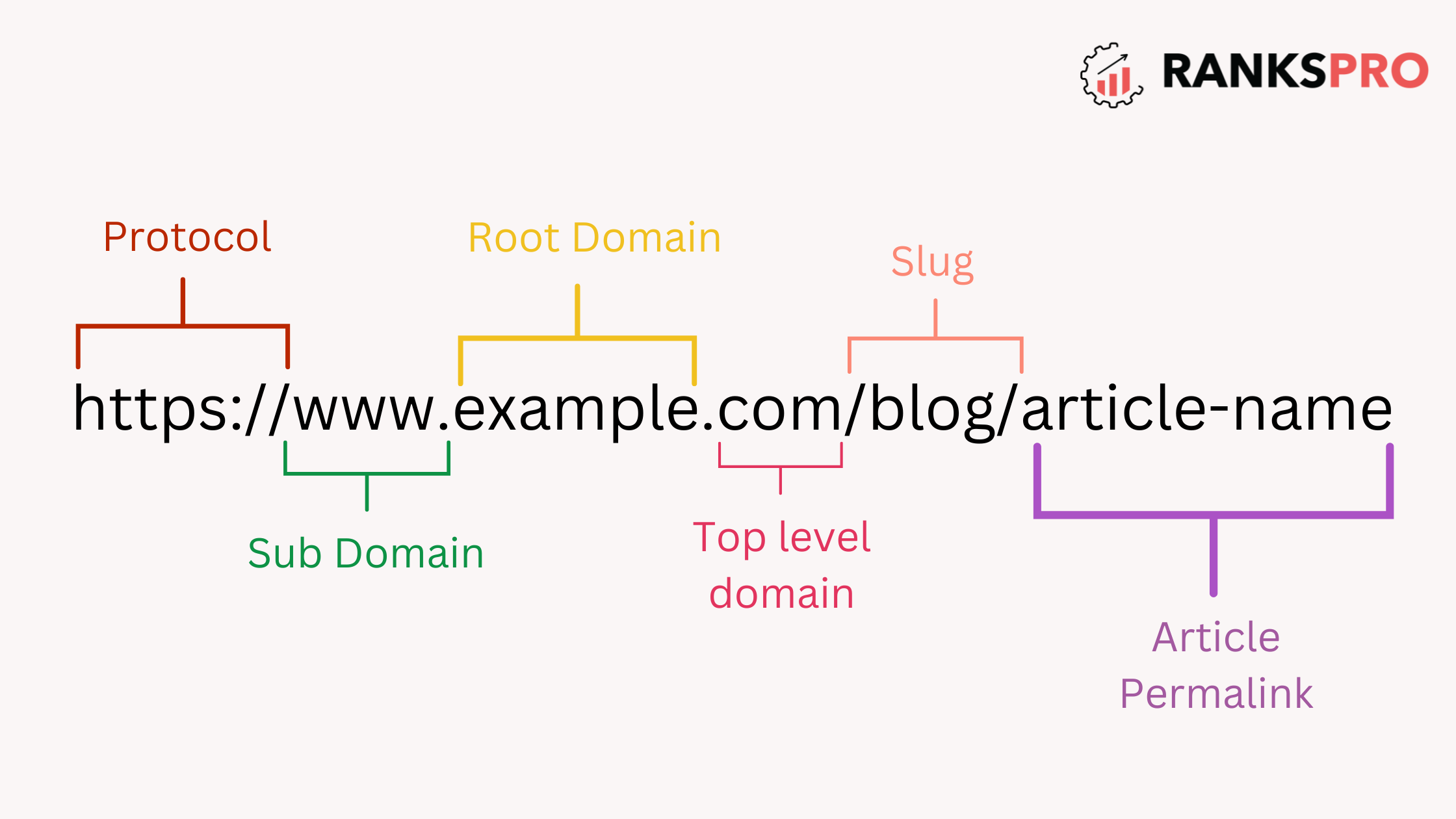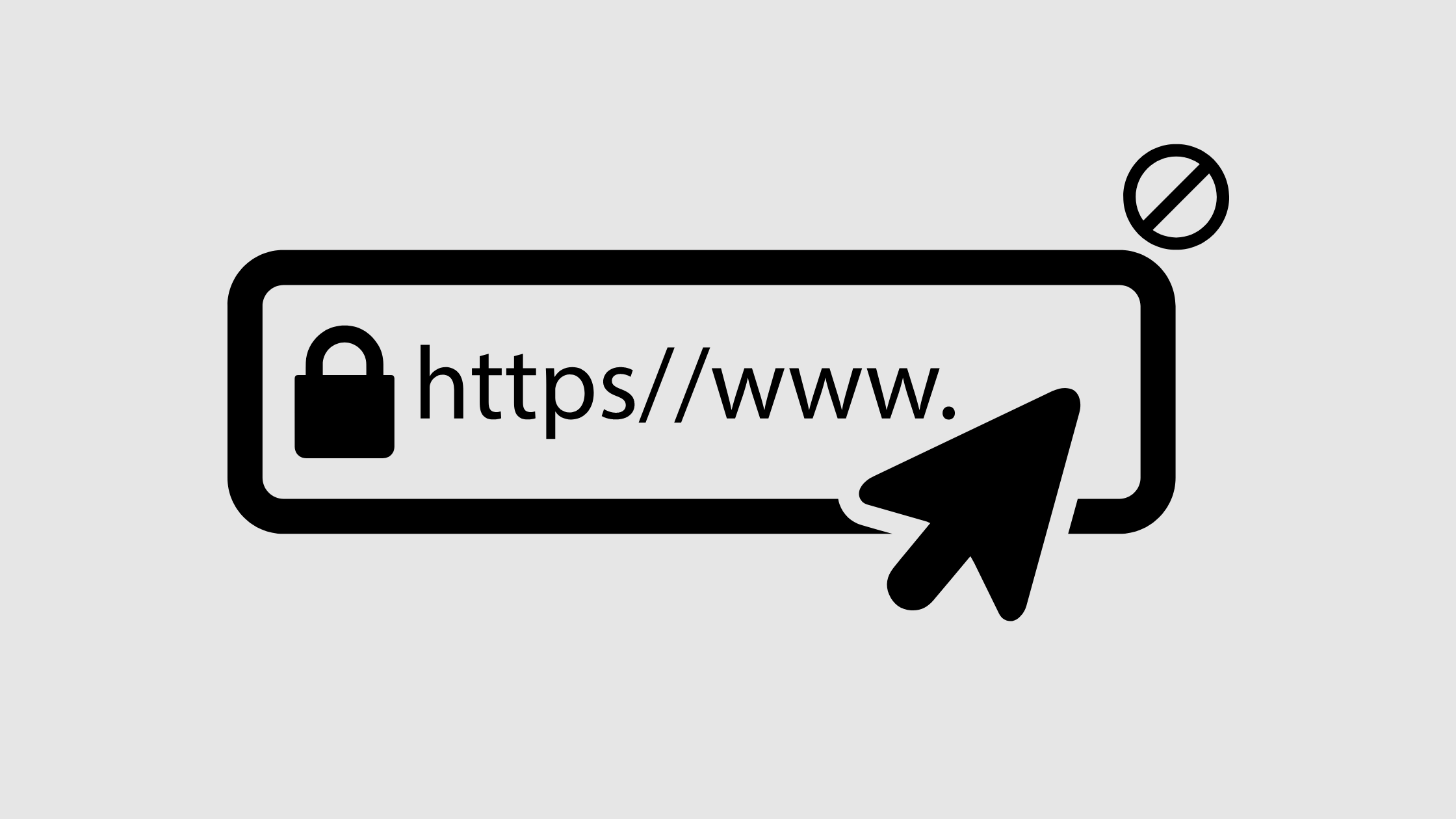In the ever-evolving digital landscape, a website’s success hinges on a multitude of factors. One such crucial element is the Uniform Resource Locator (URL), the unique address that directs users to specific webpages.
Far from being merely technical identifiers, URLs, when optimized for search engines (SEO), can significantly enhance your website’s visibility and user experience.
This guide delves into the world of SEO-friendly URLs, exploring their fundamental principles, implementation strategies, and the multifaceted ways they can empower your website.
By understanding the significance of clear and concise URLs, you can lay a solid foundation for attracting both search engines and users, ultimately driving organic traffic and propelling your website towards success.
What is a URL Structure & How It Can Be SEO Friendly?
A URL, or Uniform Resource Locator, acts as the unique address for a specific online resource. It functions like a street address in the real world, pinpointing the exact location of a web page on the vast expanse of the internet.

- Protocol: This initial part, typically “http://” or the more secure “https://”, instructs the browser on how to retrieve the information for that page.
- Domain Name: This is the unique identifier for a website, akin to a building’s name on a street. For instance, in “www.example.com”, “example.com” is the domain name.
- Subdomain (Optional): This section precedes the main domain name and often designates a specific section of the website. For instance, “[invalid URL removed]” could be a subdomain dedicated to email services.
- Top-Level Domain (TLD): This recognizable suffix, such as “.com”, “.org”, or “.net”, provides a general category for the website.
- Slug (Path): This final element acts as the specific address for a web page within the website’s structure. Imagine it as the apartment number within a building. In the context of SEO, the slug holds significant importance.
Crafting SEO-friendly slugs is an art form. Ideal slugs are concise, descriptive, and incorporate relevant keywords that accurately reflect the content of the web page. They serve a dual purpose: increasing search engine visibility about the page’s topic and providing users with a clear understanding of what to expect upon clicking.
Search engines, alongside other factors like title tags and content itself, utilize a webpage’s URL to grasp the essence of its content.While a website’s overall domain authority plays a role, incorporating relevant keywords into your URLs is a recommended practice that can positively impact your ranking.
Importance of Creating SEO-friendly URLs
The Uniform Resource Locator (URL) acts as the organizational system for your website’s content, functioning as the critical link that connects users to your valuable information. Here’s a closer look at the compelling reasons to implement an SEO-friendly URL structure for your website:
1. Enhanced Click-Through Rates (CTR)
In a crowded search engine results page (SERP), a user’s initial impression is often heavily influenced by the URL. A well-structured URL, incorporating relevant keywords, provides clarity and entices users to click through, ultimately driving higher traffic to your site.
2. Promotes Trust and User Experience (UX)
SEO-friendly URLs contribute to a positive user experience. Clear and concise URLs that avoid complexity instill trust in visitors. Additionally, the use of relevant keywords fosters memorability, allowing users to more easily recall and return to your content in the future.
3. Improved Indexing and Ranking
Clear and descriptive URLs containing relevant keywords act as signposts for search engine crawlers, enabling them to effectively index your content. This improved indexing directly correlates with increased website traffic and the potential for higher ranking within SERPs.
4. Intuitive Navigation and User Experience
By implementing a logical and hierarchical URL structure, you empower users to navigate your website with ease. This intuitive organization fosters a seamless user experience, keeping visitors engaged and exploring your content.
While SEO can involve complex technical considerations, crafting an optimal URL structure needn’t be a daunting task. By striking a balance between catering to search engine algorithms and upholding your brand identity, you can create a user-friendly and SEO-optimized planning for your website’s success.
How to Create an SEO-friendly URL Structure?
Here, we delve into the best practices for creating SEO-friendly URLs that empower both search engines and users:
1. Utilize HTTPS Instead of HTTP
The foundation of a trustworthy website lies in security. Utilizing HTTPS, the secure version of the HTTP protocol, encrypts communication between the browser and your website.

This encryption ensures that even if intercepted, data remains unreadable, fostering user trust, especially when dealing with sensitive information like credit card details.
Furthermore, Google prioritizes websites with HTTPS in search rankings, making it a win-win for both security and visibility.
2. Focus on User-friendliness
Effective URLs strike a balance between user-friendliness and SEO optimization. Avoid long, convoluted strings of text filled with cryptic combinations of letters and numbers. Strive for short and clear URLs that are easy to read, remember, and type.

Imagine your URL as a concise headline; it should instantly convey the essence of the web page’s content. For instance, a page about “Italian Renaissance painters” would ideally have a URL containing relevant keywords like “italian-renaissance-painters” within the slug.
3. Include Relevant Keywords
Keywords aren’t just important for on-page and off-page SEO, but also to technical SEO aspects – here for URLs. You can create SEO-friendly URLs by utilizing them in slug.

However, a misconception lies here that Google also considers websites or web pages that have URLs with the primary keyword in it. It’s not at all the complete truth! Keywords in URLs provide a signal or a hint to the users about the page – what information it provides, where it will lead users to or matching the query that users hit on Google searches.
And when the users find the relevancy in the URLs according to the queries they are searching, they simply choose to click them.
4. Use Lowercase Letters and Hyphens
Always use lowercase letters for your URLs. This consistency prevents technical headaches behind the scenes. Uppercase and lowercase letters can sometimes be indistinguishable online, leading to redirects and error messages (those dreaded 404 errors) that can leave users feeling lost and frustrated.

Separate the words in your URLs with hyphens (-) for better readability. Hyphens act like clear dividers, making it easy for users to understand the structure and content of the URL at a glance. Avoid uppercase letters altogether, and resist the urge to use underscores (_).
While underscores might seem like a harmless separator, they can blend in with the underline often seen on links, making them look like spaces and potentially confusing users.
5. Use Anchor Texts
Instead of simply displaying the full URL (which is a jumble of characters with no meaning to search engines or users), embed the URL within descriptive anchor text. This anchor text acts like a way to reveal the true value of the linked page to both users and search engines.

Users instantly understand what awaits them when they click the link, while search engines get a clear understanding of the page’s content. This helps in boosting your ranking for relevant searches. Simple URLs offer no clues for search engines and hinder your SEO efforts.
6. Consider Redirecting Old URLs
As your website grows and evolves, you might refine your URL structure for better organization and user experience. In such cases, don’t leave users or search engines scrambling! Utilize permanent redirects (301 redirects) to seamlessly guide them to the updated location.

Think of redirects as guides that can help everyone with a smooth transition. However, keep the number of redirects to a minimum. Too many redirects can slow down your site’s loading speed, frustrating users and potentially harming your SEO. Creating SEO-friendly URL structure from the beginning minimizes the need for redirects later.
7. Remove URL Parameters
You’ve likely encountered question marks (?) in URLs on e-commerce sites. These are URL parameters used for filtering and sorting products by color, size, price, or other criteria. While helpful for navigation, avoid unnecessary parameters on important pages like product descriptions.

Excessive parameters can create duplicate content issues – the same content being accessible at multiple URLs (think a red t-shirt listed with a parameter for size and another for color). This confuses search engines and can dilute the ranking potential of your content.
If unavoidable duplicates exist, use “canonicalization” to point search engines to the preferred version, ensuring your strongest content gets the SEO credit it deserves.
8. Avoid Mentioning Dates
Many Content Management Systems (CMS) like WordPress automatically include dates in URLs, especially for blog posts. While seemingly harmless, updating content with dated URLs can confuse search engines, potentially showing conflicting information in search results.

If your existing site uses dated URLs, leave them as-is to avoid website issues. For new websites, adjust your CMS settings before publishing to prevent dates in URLs. This ensures your content stays fresh and relevant, keeping both users and search engines happy.
By following these practices, you can create clear, informative, and search-engine-friendly URLs that enhance your website’s overall user experience and search ranking potential.
Use RanksPro To Optimize URL Structure
Creating SEO-friendly URLs goes beyond mere technicalities – it’s about creating a seamless experience for both users and search engines. Clear, descriptive URLs guide users to the information they seek, while also communicating your content’s value to search engine algorithms.

By following the best practices outlined above, you can establish a well-optimized URL structure that enhances your website’s overall functionality and search ranking potential.
Now that you’re equipped with the knowledge to create SEO-friendly URLs, consider how RanksPro can further empower your website optimization efforts. RanksPro offers a comprehensive suite of features specifically designed to analyze and optimize your URL structure.
Here’s how RanksPro can be your partner in URL optimization success:
- In-depth URL Analysis: RanksPro crawls your website and analyzes your existing URL structure, identifying areas for improvement. It can pinpoint potential issues like duplicate content caused by excessive parameters or dated URLs.
- SEO-Friendly URL Recommendations: Based on your website’s content and target keywords, RanksPro can suggest optimized URL structures that are not only user-friendly but also adhere to SEO best practices.
- Rank Tracking and Monitoring: Once you’ve optimized your URL structure, RanksPro helps you track the impact on your website’s search engine rankings. Monitor your progress over time and identify areas where further optimization might be beneficial.
- Keyword Research and Suggestions: Get the most relevant keywords for every web page you have, which can also be utilized for creating URLs.
By leveraging the power of RanksPro alongside your newfound knowledge of URL optimization, you can ensure your website’s URLs are working as hard as they can to attract users, improve user experience, and propel your website towards SEO dominance.




